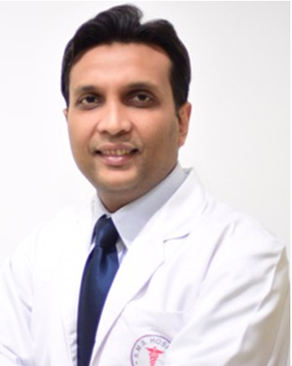
Jaipur, October 13, 2021.
More than two billion individuals live with eye conditions globally, with
India alone home to millions of people suffering from preventable vision loss. According to AIIMS’ National Blindness and Visual Impairment Survey
India 2015-19, 1.99% of Indians over the age of 50 years suffer from blindness. While
the number of Indians facing potential blindness is alarming, an even bigger
concern is that the contributing conditions are greatly under-diagnosed.
As a result, a significant percentage of people suffer from permanent loss
of vision due to factors includingcataract (the
clouding of the eyes’ lens), which is responsible for
66.2% of blindness cases amongst individuals aged 50 years or older, glaucoma
(damage to the optic nerve) or retinal diseases like Age-related Macular
Degeneration (AMD) and Diabetic Macular Edema (DME), which affect the layer of
tissue in the back of one’s eye. AMD and DME, that are leading causes of
blindness, are chronic and progressive retinal diseases that can be effectively
managed with early detection and timely treatment. Glaucoma is also one of the leading
causes of blindness for people aged 60 or older.
Dr. Vishal Agrawal, Senior Eye
Specialist &Vitreo Retinal Surgeon, Secretary, Jaipur Ophthalmological
Society said “India accounts for a major chunk
of the world’s total burden of blindness and vision impairment. Almost 90% of
vision loss is preventable or treatable. Investing in your eye health improves
quality of life, economic empowerment and educational attainment. Good vision
is fundamental in achieving all round development goals.”
He continued, “The main causes of vision
loss are uncorrected refractive errors (non-use of glasses), cataract, glaucoma
and retinal diseases like diabetic retinopathy & age-related macular
degeneration. Timely diagnosis and treatment is imperative across these
conditions, failing which it can result in irreversible vision loss. Routine
eye check-ups for patients with diabetes, children and the elderly population
can aid in early detection and minimal vision loss. The biggest challenge at
present is to make preventive and curative quality eye health care services
accessible and affordable to the majority of our population. The government
through its numerous flagship programs is helping to overcome this huge task.”
World Sight Day, celebrated on October 14th, marks an opportunity to raise awareness about retinal diseases and showcase the community’s commitment to support the millions of people nationwide living with preventable vision loss. This year’s theme, ‘LoveYourEyes,’ re-establishes the importance of giving one’s eyes the due care they deserve. World Sight Day forms a key opportunity to promote the need for regular eye screenings. Building on this, enshrined as part of the United Nations’ Sustainable Development Goals, nations have made eye-health integral to their SDG efforts. Starting at a young age, undertaking holistic steps to maintain optimal eye health is vital to prevent the onset or progression of eye diseases. This includes timely eye exams, staying alert to early warning signs such as blurry or double vision, limiting continuous screen exposure and blocking harmful UV rays, and reducing behaviours that could induce eye complications, including smoking.
Untreated Eye Diseases: TheDouble Threat
DME is a complication of diabetic retinopathy, affecting the back of the eye (the retina). It is estimated that by 2040, India will have the second highest number of diabetes cases in the world – with a proportionate rise in cases of preventable vision loss. According to research, 17.6% to 28.9% of diabetics suffer from diabetic retinopathy in India, largely affecting the country’s working age population. For a nation with a population of 1.3billion people, this translates into significant disease burden as well as impacts on quality of life, productivity and the economy. A similar situation is evident in the case of AMD, which is the leading cause of vision loss among the elderly. Wet macular degeneration (wet AMD) is a chronic and degenerative disease. Timely commencement of treatment not only slows the degeneration, but also helps one maintain their eyesight.
Other diseases such as Glaucoma and cataract worsen with age and are medical conditions that may cause irreversible vision loss if untreated. Glaucoma is often neglected until a significant amount of damage has occurred. Those with a family history of glaucoma, or above the age of 40, are especially at risk.
Treating & Managing Eye
Diseases
Early detection is vital to prevent vision loss, and recognizing its symptoms and undergoing screening can be key to this. There are various treatment options available that can limit disease progression and consulting an ophthalmologist to discuss available treatment modalities is a key step to understanding options that can be beneficial for maintaining eye health. Some of the options available in India include laser photocoagulation, anti-VEGF (Vascular Endothelial Growth Factor) injections, surgery and combination therapy which includes laser and anti-VEGF treatment. These are especially important to consider now, considering the gaps in treatment and routine eye care during the COVID pandemic, which led to health complications for affected patients, including the younger population.
Strictly adhering to prescribed treatments
and recommended lifestyle modifications will help individuals keep their eye
diseases in check, so they can benefit from improved outcomes.